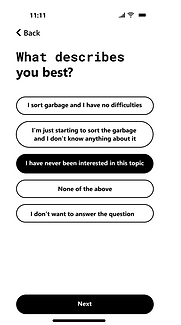अश्मिता गुप्ता
अश्मिता गुप्ता
Ashmita Gupta
अश्मिता गुप्ता

System Design


Leather loop
Illogically reduced consumption often increases waste, particularly with undervalued discarded leather. This creates an opportunity for brands to educate consumers about repurposing such materials, promoting sustainability.
Ideation
Our goal is to innovate a method that boosts participation in leather waste recycling, ensuring all footwear, including children's, is addressed. By tackling these issues, we aim to reduce environmental impact, improve solid waste management, and foster sustainability—guiding each step in my sketches.


Systemic approach
A systemic approach linking diverse stakeholders through resource optimization and collaborative solutions.
1.

Contextualizing the footwear waste
2.

System and opportunity mapping
3.
%20(1)_edited.jpg)
Stakeholder and behavior mapping
4.
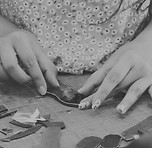
Explorations and impact mapping
5.

Social Entrepreneurship Model: Leather Loop
Contextualizing the Footwear waste
Our research revealed that only 15% of leather waste is properly managed, with 85% ending up in dump yards. Few companies, like The Green Sole, recycle footwear but overlook children's leather shoes, prompting us to design a sustainable waste management solution.


System and opportunity mapping
The leather footwear industry in Tamil Nadu offers opportunities for innovation in sustainability, efficiency, and workforce well-being. Research reveals key areas where targeted interventions can address challenges, bridge gaps, and capitalize on emerging opportunities to enhance the industry's future.
Overview of giga mapping
Low footwear recycling
Recycling inefficiency
Waste management gap
Leather reuse
Pollution from brick baking

Field visits
To understand the functioning of interconnected domains and the sustenance of the leather footwear industry in India (Tamil Nadu- Cade Study) in 2024.






International leather fair 2023 (Chennai)
Good leather factory (Chennai)
Hidesign factory (Pondicherry)
Auroville papers (Auroville)
The colours of nature (Auroville)
Swaram sound (Auroville)
1000's of opportunities
Waste Management
Community & Environmental Impact
Logistics and Supply Chain Management
Hygiene and Safety
Animal Welfare
Environmental Sustainability
Material Innovation
Packaging Innovation
Ethical Sourcing and Sustainability
Global and Local Market Integration
Waste management
Utilizing Slaughterhouse Waste
Explore new material creation from slaughterhouse waste.(Designers/ Material scientist)
Repurposing Leather Waste
Investigate the potential of untreated waste/discarded leather for new material creation/products. (Designers/ Material scientist)
New Uses of Adhesives and Solvents Waste
Developing methods to reuse treated waste from adhesives and solvents. (Chemical Engineer )
Leather footwear as a Solid Waste Management


Stakeholder mapping
In our stakeholder mapping, we've ensured the inclusion of everyone, no matter their role—whether contributing 1% or facing challenges like losses. We've made every effort to engage all stakeholders, recognizing their importance in shaping and supporting the project's success.
User and institutional behavior study
Through extensive primary research, I mapped the lifecycle of leather footwear, identifying how consumers discard worn-out shoes and the various channels that responsibly repurpose, recycle, or dispose of the materials.
How do consumers dispose of worn-out leather footwear?
Who usually gathers discarded leather footwear?
What businesses do with discarded leather footwear?
When did consumer stop using the leather footwear?
Aging
Climate and weather
Concious
Use and qulality
Lifestyle
Demand and supply
Material
When the sole goes bad
When the sole/ leather became hard
Moisture
Heat producing
Flatten the sole
When the leather starts losing colour
Broken sole
Gets too old
Glue start loosing grip
Loose stitching
When its too old
No longer natural shine
After realization
Awareness by alternatives
Environmentalist
After strap broken
Flatten the sole
When the leather starts losing colour
Broken sole
When it gets loose
Not comfortable enough
Low cost availability
If u have a good options
Aspiration (over purchase)
When it’s not waterproof
Get fungus
Highly flammable
Fast fashion
Rigid with purpose
Bad smell
Lots of wrinkles
Wear and tear
Stain & marks
Glue start loosing grip
Loose stitching
Cracks
Scenario capture and on-ground reality assessment

Final
travel
WASTE
Sola RTS
compress station
Dump yard
(compost)
Rag pickers
Warehouse/
Godam/
Karkhana
Cutting centers
Recyclers
Rag pickers
Municipal corporation
NGO's
Municipal corporation
Discarded footwear




NGO: Non-governmental organisation

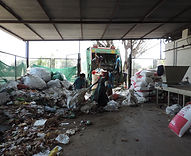


Ragpickers


%20(1).webp)

Sola RTS




Warehouse
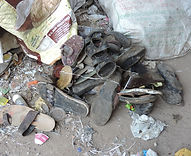







Dump yard




Cutting center

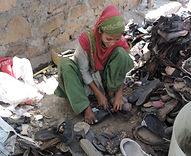


Muncipal corporation
Explorations and impact mapping
Product afterlife focus
Positive scenarios: GreenSole
Minimum wastage
Refurbished shoes
Carbon emission reduction
Sustainable footwear

.jpg)
.jpg)
.jpg)
Negative scenarios
Low footwear recycling
Recycling inefficiency
Waste management gap
Leather reuse
Pollution from brick baking
Burning discarded footwear
Landfill waste
Slow decomposition
Environmental impact
Unsustainable disposal practices



Disposed shoes analysis
Segregation of Leather shoe
16 separate parts
1-hour process
METRO brand
No sole
Precision knife
_edited_edited.jpg)
_edited.jpg)
_edited.jpg)
_edited.jpg)
_edited_edited.jpg)
Cleaning of segregated leather footwear
Surface dirt removal
Shoe brush cleaning
Emery sheet (2000 grain)
Leather smoothing
Glue, thread, lining, fabric removal
Splitting machine






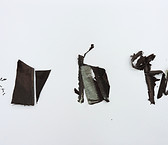




Detailed opportunity mapping
Non Governmental Organization
Municipal corporation waste collection truck
Rag pickers
Waste
We identified an opportunity to bridge the gap between discarded leather footwear waste and existing collectors—rag pickers, NGOs, and municipal waste trucks
People with convenient options to properly discard leather waste.
Promote leather as a valuable resource rather than waste.
Expand the range of options in waste collection.
Reward system with incentives to motivate people.
Promoting leather as a resource encourage responsible consumption.
Educate consumers on leather's value and sustainability during purchase.
Efficient sorting and recycling of leather waste at the source.
Rag pickers are unorganized in choosing and picking the waste.
Design brief
How unorganized waste management turns into impactful awareness and products through organized post-consumer leather waste methods, creating a social impact.
Aim
We aim to organize a waste management system for the footwear leather industry that enhances sustainability and minimizes waste without disrupting existing operations.
Sustainability activist: Persona mapping
Olive, a young sustainability activist, balances corporate life with eco-conscious values. She champions mindful living and ethical choices, making her home and lifestyle a testament to environmental stewardship despite budget constraints.
Olive, a young sustainability activist, balances corporate life with eco-conscious values. She champions mindful living and ethical choices, making her home and lifestyle a testament to environmental stewardship despite budget constraints.
Olive
28+
(late 20’s)
Young employee
Values lifestyle
Sustainbilty activist
Conscious consumption

Solution development
Sketching and prototyping









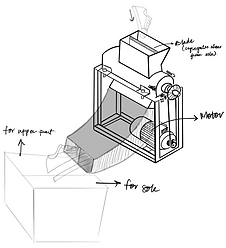
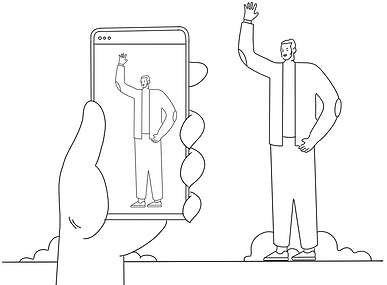

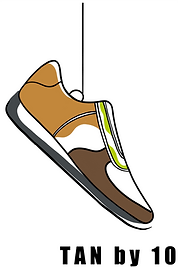




Making process





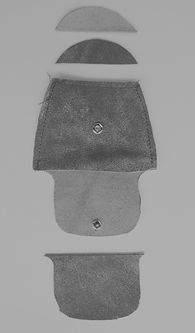



Prototypes
A line of products using 80 to 90% discarded leather footwear! It’s been a sustainable journey.
Bag



Keychains



Bag tag



Final product line
Innovative products made from discarded leather waste, blending sustainability and design. Repurposing materials, champions a circular economy, promoting responsible consumption while combining aesthetics and functionality for a greener future.
Leather loop
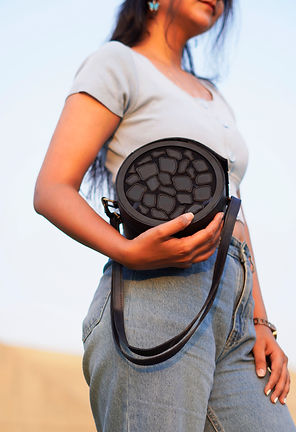





The Grid

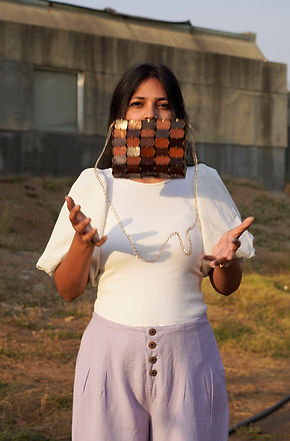

Detailings




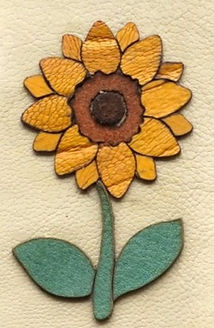

The Social Entrepreneurship model
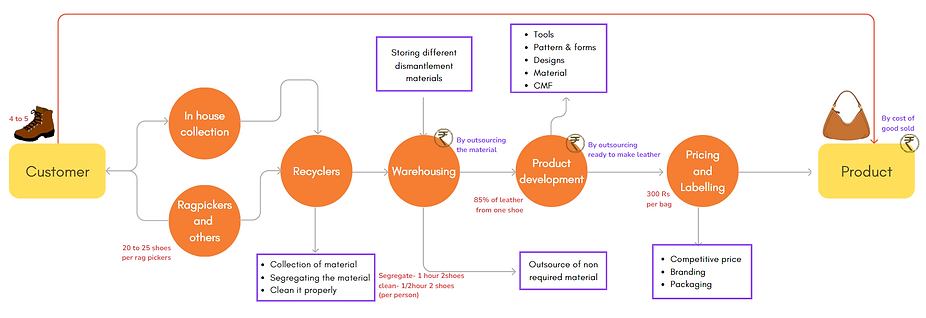





Manufacturing unit
Pricing and labeling
Consumers
Rag pickers
Recyclers

Warehousing

Product
Main issue
Problem
Low awareness leads to recyclable waste in landfills.
Efficient waste sorting is virtual for the environment and cost-saving, but scattered information makes it challenging.
Faced without difficulty, people opt for convenient landfill disposal.
Solution
Low awareness leads to recyclable waste in landfills.
Efficient waste sorting is virtual for the environment and cost-saving, but scattered information makes it challenging.
Faced without difficulty, people opt for convenient landfill disposal.
User stories
As a college student new to waste sorting, I want a comprehensive waste sorting application to quickly learn and implement proper waste disposal methods.
As a father of school-going children, I need a simple app assistant to help me confidently sort waste and contribute to environmental efforts.
As an experienced waste sorter, I need the app to show updated maps of collection points for efficient recycling.
User motivations and goals
-
Protecting the environment for future generations
-
Setting a good example for friends and family
-
Feeling connected to the nature and planet
-
Improving personal health and well-being
-
Find nearby recycling centers
-
Learn about different ways of recycling materials
-
Stay updated on recycling regulations
-
Educate others about the importance of recycling
-
Contribute to a cleaner environment
Application features
SORTING GUIDE
Directory for waste sorting rules, recyclable materials, and eco-labels for quick reference.
COLLECTION POINTS
Map with the real-time waste collection points, complete with operating hours and one-tap Google map direction.
SMART AI SCANNER
AI scanner identifies waste types, simplifying sorting for users.
ENVIRONMENTAL NEWS
Stay updated on current environmental news through an engaging story format
User flow
Splash screen
Start screen
Continue with
With Email
With Apple
With Google
Forgot Password
Send Code
Code came to email?
no
yes
Enter Email
Enter email, password
yes
Entre code
New password
no
New user
Send code
yes
yes
no
Code came to email?
Enter code
Home screen
Enter the name
Onboarding
Loaction access
Select suitable option
Wireframes
